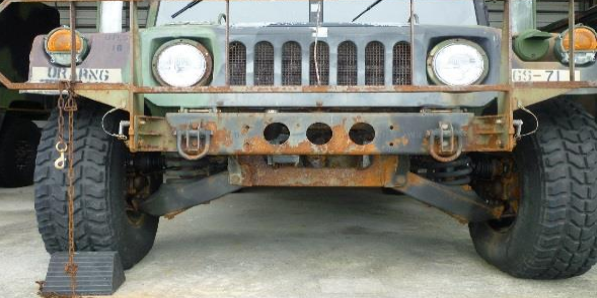The Defensive Equipment and Armored Vehicle Division (DEAV) of the Department of State (DoS) has seen repeated and extensive corrosion on armored vehicles (AVs) at various posts, affecting both armor and original equipment manufacturer (OEM) parts. It was unknown how quickly corrosion reduces the protection capability of armors, to include opaque armor. Further, although armoring contractors use various corrosion-prevention applications, they did not know which was most effective.
To mitigate armor corrosion on the deployed fleet and prevent it in the future, the DEAV conducted research and analysis on deployed AVs and the armoring production process to identify corrosion-prevention materials, techniques, and operational procedures.
The results of this study provide the optimal corrosion-prevention compounds to be used during production and on currently deployed AVs. In addition, the results help the DoS determine the level of corrosive mass loss where armor is no longer effective against its rated threats. The results of this project are most applicable to civilian armored vehicles, such as those that make up the DoS AV fleet and are still useful to all programs that use AVs.
As a summary of this research project, this webinar presentation covers:
- Background
- Project Goals
- Corrosion Evaluation Methodology
- Summary of DoS Post-Corrosion Levels
- Review of Current Corrosion Presentation Measures
- Corrosion Analysis of Previously Deployed AVs
- Accelerated Corrosion Test Plan and Results
- Corrosion-Prevention Measures—Coupon Test Results
- Ballistic Testing and Results
- Key Takeaways


